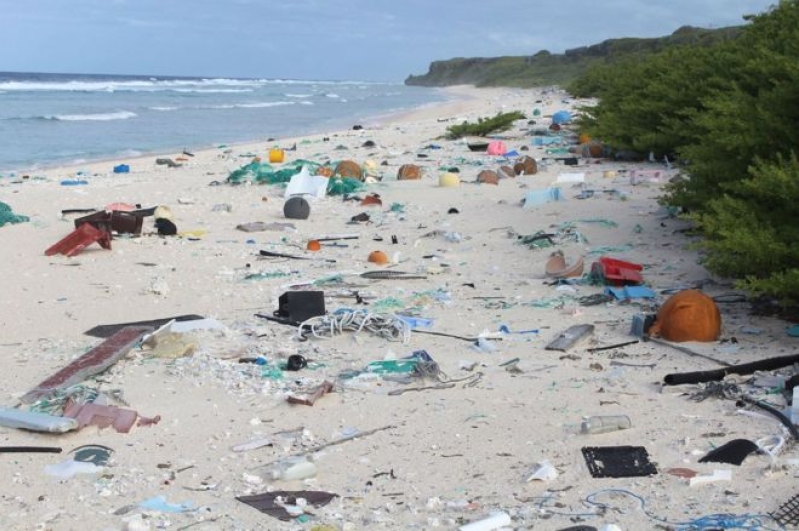
It is logical to think that waste and rubbish build up would only happen in places where there are humans. The more humans there are in the area, chances are, there will be more waste generated. If there is an improper method in proper waste disposal, then rubbish piles will start to stack up and the surrounding environment would end up with a great stink, being a breeding ground for diseases and all things unsavory. However, when you take a remote island into consideration where there are no permanent human inhabitants on it, tucked away somewhere in the South Pacific, one would most probably have composed a rose-tinted picture of an idyllic getaway, right? On the contrary, Henderson Island, a remote, uninhabited island that is part of the UK’s Pitcairn Islands group, is littered with the highest density of plastic waste in the whole world, based on a study. Just how much waste is there?
A report has shown that there is an estimated 37.7 million pieces of debris that washed up on its beaches. Henderson Island happens to be located close to the center of an ocean current, and this “strategic” location is what makes it the prime meeting point where rubbish from boats and South America end up. Researchers do hope that the images of Henderson Island’s plastic strewn beaches will be able to shock people into rethinking "their relationship with plastic". The study was performed in conjunction with Australia and Britain, where it totaled a whopping 671 items per square meter with a total tonnage of 17 tonnes. To see Henderson Island located around 5,000 km off the coast of South America, and yet to have it collect so much rubbish is certainly surprising. The study or report was published in the journal Proceedings of the National Academy of Sciences, and in it, it showcased a description on how Henderson Island and other equally remote places at the meeting point of the current functioned as a "sink" for the world's rubbish that ends up in seas. What are some of the “catches” picked up along the way? Fishing items would rank pretty high on the list, in addition to everyday items like toothbrushes, cigarette lighters and even razors.
Dr Jennifer Lavers from the University of Tasmania, shared, "A lot of the items on Henderson Island are what we wrongly refer to as disposable or single-use. Land crabs are making their homes inside bottle caps, containers and jars. At first it looks a little bit cute, but it's not. This plastic is old, it's sharp, it's brittle and toxic. Almost every island in the world and almost every species in the ocean is now being shown to be impacted one way or another by our waste. There's not really any one person or any one country that gets a free pass on this." Apart from that, there is a large number of hard hats of "every shape, color and size" which washed up ashore, no doubt from millions of tourists and fishermen from all over the world.
Henderson Island has been shortlisted by Unesco as a coral atoll that carries a relatively unique ecology, where it carries 10 plant and a quartet of bird species. It is located some 190km (120 miles) from Pitcairn Island, and is approximately 5,000km from Chile, placed close to the center of the South Pacific Gyre, which is a huge rotating current.
It still amazes me as to how education in less developed countries to keep the environment clean for the next generation is lacking. The world’s rubbish and plastic problem could definitely be eradicated, but it will require the effort from every one of the earth's human inhabitants, and not a global body or government agency.







